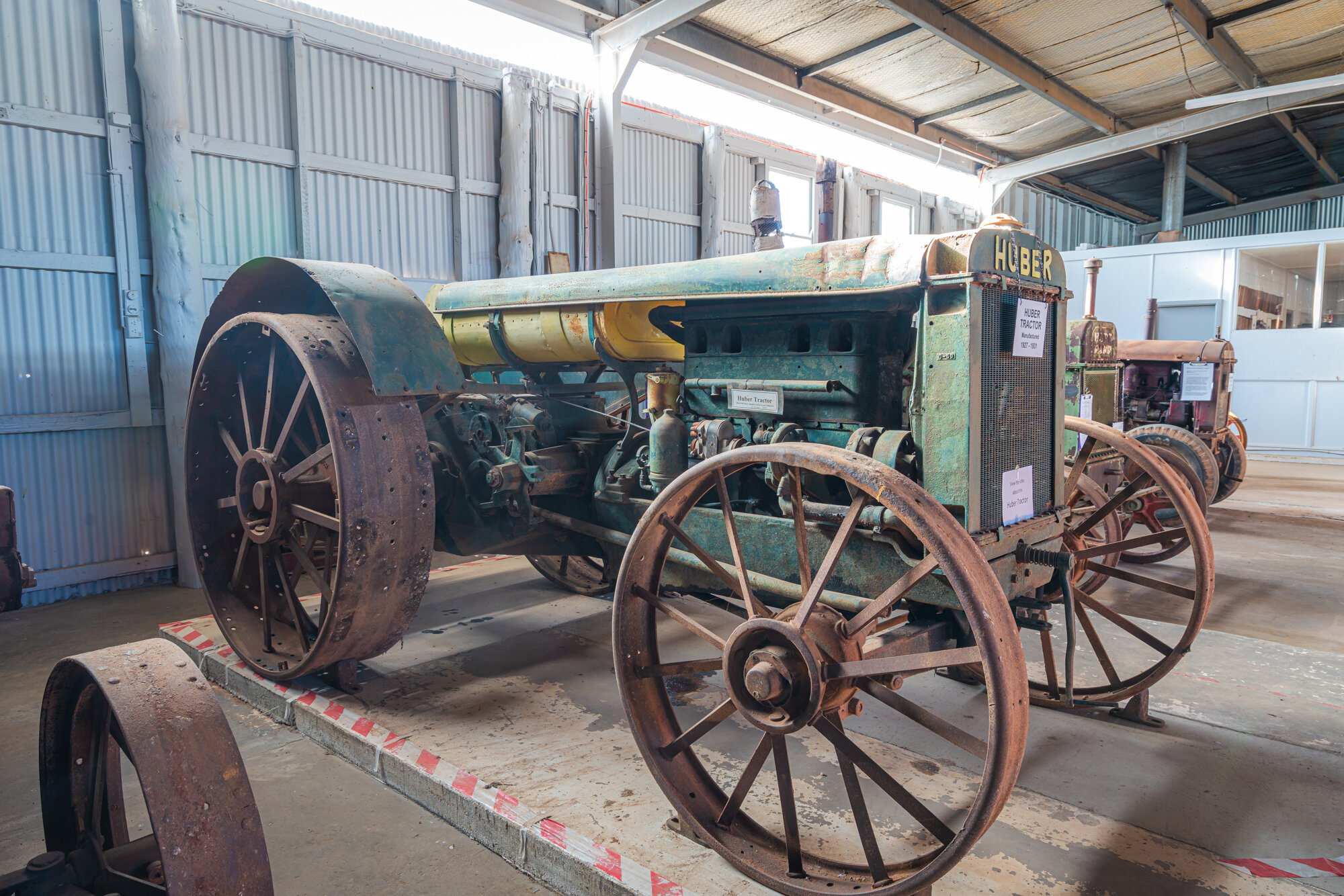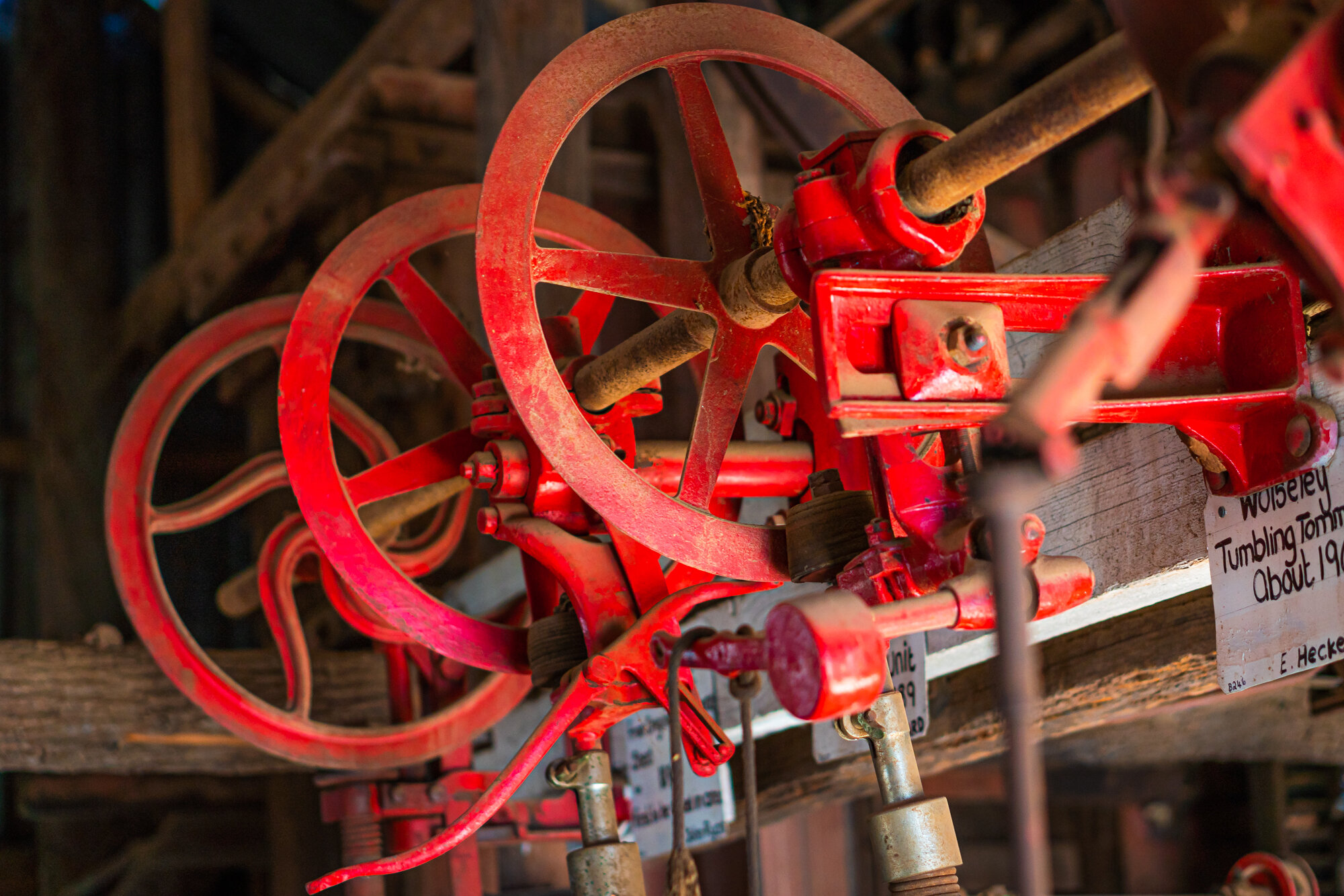Talking Machines
See our unique Talking Machines.
Hot Air Engine
Interviewees: Rowan Heckendorf, Donald MacKenzie, David Read & Lloyd Slocum
Location: Lockhart
Theme: Power
Hot air engines were developed as an alternative power source to steam engines. They had a low power output, were simple to operate, required a minimum of attention, and were reliable with far fewer moving parts than steam engines. Some small engines were used for lifting water out of stock wells and pumping water to homesteads. Few were made after the turn of the twentieth century but made a revival in the mid-1930s.
Source: Museum of the Riverina
Sheep Shearing Machines
Interviewees: John (Jack) Smith
Location: Lockhart
Theme: Animals
Jack worked in the shearing industry for 45 to 50 years in the Lockhart area and was witness to change within the industry- the move to owning your own gear and the introduction of slings to protect shearers’ backs. Overwhelmingly though, the industry’s technologies have remained constant over the past 100 years and Jack’s video testimony supports this notion.
Source: Museum of the Riverina
Huber Tractor
Interviewees: Vernon Stokes & Kerry Anderson
Location: Lockhart
Theme: Power
The introduction of the American made Huber Tractor in Lockhart and district tells the story of transition to the age of mechanisation, the ability to work on a 24-hour basis – not previously possible with horsepower, the love of machinery which spurs on restoration and the adaptions necessary to make machinery more suitable to the Australian environment.
Source: Museum of the Riverina
Horse Treadmill
Interviewee: Peter Smith
Location: Lockhart
Theme: Power
Horses were the chief source of power on the Australian farm from the 1850s until after the First World War. Draught horses pulled wagons loaded with produce from the farm to the rail head, hauled ploughs, seed-drills and harvesters, and powered winnowers and animal feed preparation machines by walking on an endlessly revolving treadmill. This film overviews the use of Horse Treddles for power generation as well as discussing the role of a museum in preserving this history.
Source: Museum of the Riverina



